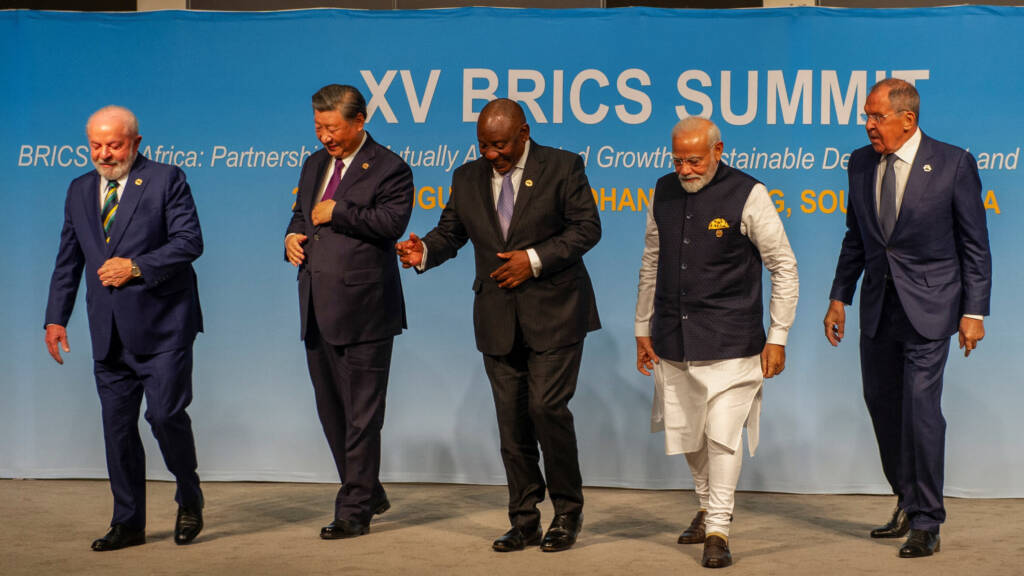The new BRICS hopeful, long aspiring for European Union membership since 2009 with limited progress, is casting its gaze towards the BRICS bloc, an alliance actively expanding its membership and focusing on moving away from the U.S. dollar as the dominant global currency. In recent times, the BRICS group—comprising Brazil, Russia, India, China, and South Africa—has increased its invitations to nations aligning with its economic strategies. This shift resonates with a broader global movement among countries to diversify their international economic dependencies.
The country is Serbia that finds itself at the threshold of an unprecedented opportunity. Last year, following the Serbian parliament’s approval—spearheaded by the Movement of Socialists—the nation officially expressed its intention to join BRICS. This move, widely supported within Serbia, positions the country to potentially become the first European member of this influential bloc.
Moreover, recent developments suggest that BRICS is reciprocating Serbia’s interest. The group has reportedly extended an invitation for Serbia to attend the next summit scheduled in Russia later this year. This gesture is significant, signaling a possible expansion of BRICS into Europe with Serbia leading the way.
Should Serbia secure membership at the upcoming summit, it would not only mark a strategic pivot in its international alignments but also set a historic precedent as the first European nation to join the BRICS bloc.
In a recent update from the World Bank, Serbia’s economic prospects appear brighter than previously forecasted. For 2024, Serbia’s economic growth estimate has been elevated from 3.0% to 3.5%. The momentum doesn’t halt there; projections accelerate to 3.8% in 2025 and peak at 4.0% by 2026.
Beyond mere growth, the fiscal landscape is set to experience varied shifts. Inflation in Serbia is pegged at 5% for this year but is anticipated to decrease to 3.5% by 2025 and further to 3.2% in 2026. Conversely, the current account deficit is expected to expand, moving from 2.6% of GDP to 3.6% this year, with no immediate signs of contraction. On a positive note, Serbia’s fiscal deficit is forecasted to decline, from 2.2% of GDP last year to 2.0% in 2024, and reducing further to 1.5% in subsequent years.
Since its inception in 2009, BRICS has witnessed a dominant trade relationship centered around China, while other member countries seemed to merely play supporting roles. However, with India’s economy surging forward, it is beginning to level the playing field within the bloc.
Despite close ties within the BRICS nations, their intra-bloc trade pales in comparison to their individual trade volumes with China. This dynamic is further complicated by China’s assertive foreign policy, particularly evident in its United Nations dealings, where it has frequently played a pivotal role, save for a few instances like Brazil’s stance on Ukraine in 2022. That’s why China wasn’t keen on adding more new members to the bloc.
However, India’s strategy involves broadening the BRICS membership to encompass a diverse range of economies, from financially robust nations to those in economic distress, along with key oil-rich countries such as Saudi Arabia and the UAE. The challenge for BRICS lies in managing such diversity without losing sight of its collective objectives post-expansion.
In addition to these expansion efforts, BRICS is advocating for substantial reforms in global financial institutions like the International Monetary Fund and the World Bank. The group pushes for a more equitable representation and is championing the use of local currencies in trade to avoid over-reliance on dominant global currencies.
The success of this expanded BRICS will largely depend on how it resolves internal differences and how effectively it can position itself on the global stage. The interplay of China’s influence and the responses from other BRICS nations, especially India, will significantly determine the bloc’s future dynamics.
This expansion could either solidify BRICS as a formidable global alliance or present complex challenges, especially for countries like India that are navigating their competitive stance with China. As for Serbia, joining BRICS could mean aligning with a powerful and diverse set of countries, potentially opening up new geopolitical and economic opportunities. The outcome of this alliance will reveal whether Serbia can indeed benefit from this significant shift.
